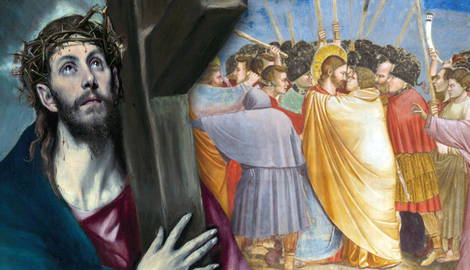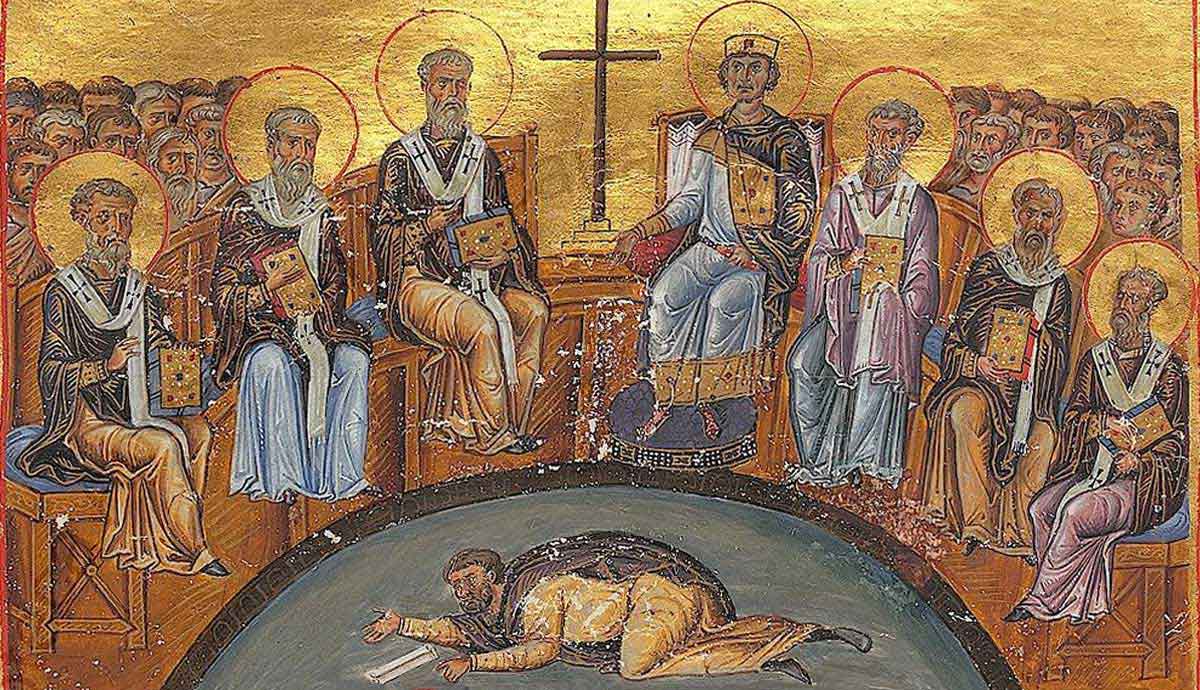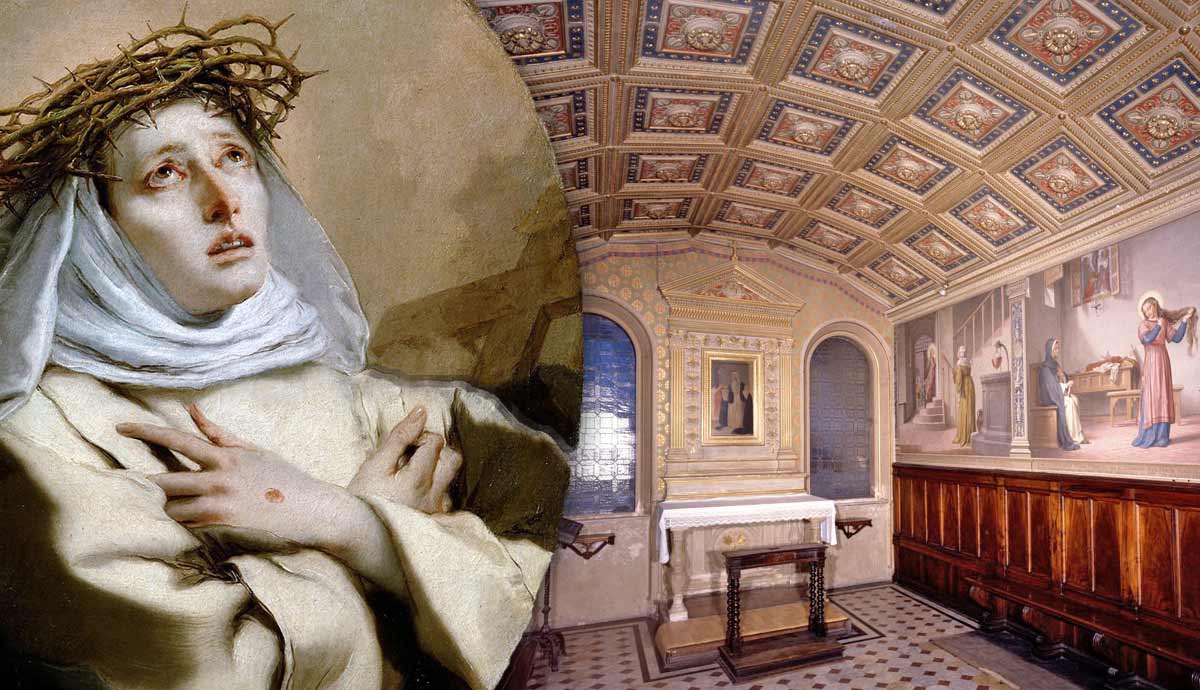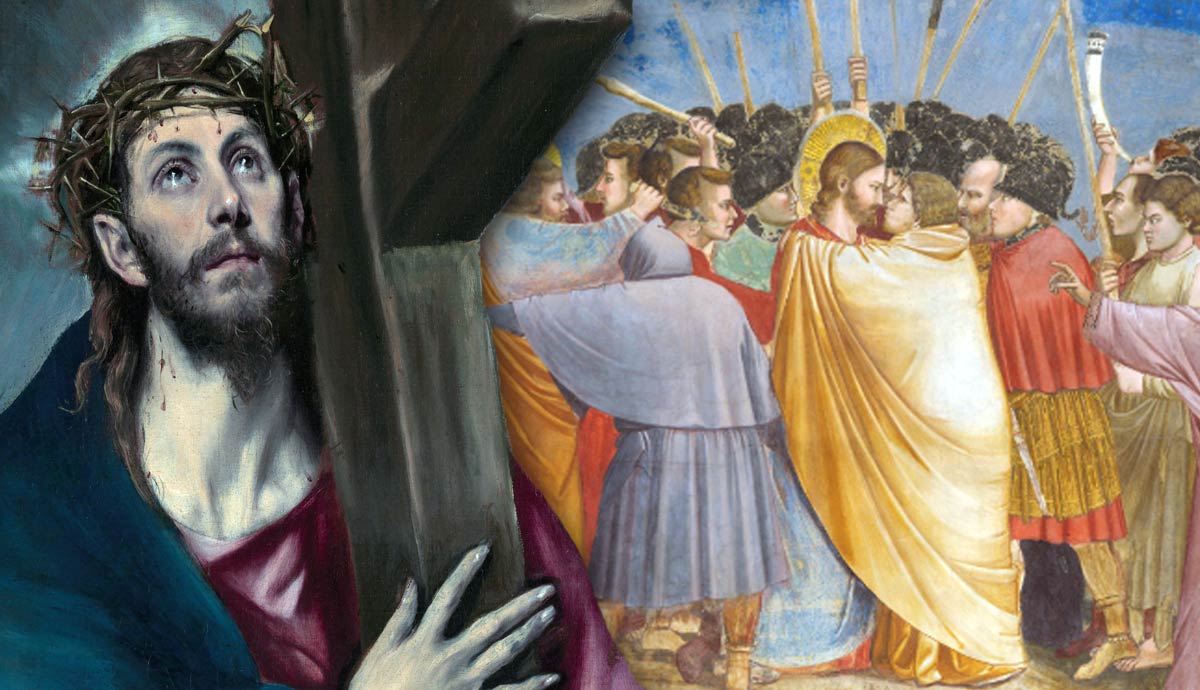
Take a look into some of the most notable, memorable depictions of Christ’s Passion from world history. Depictions that have struck a chord with the very souls of audiences around the world.
1. Giotto’s Capture of Christ/Kiss of Judas
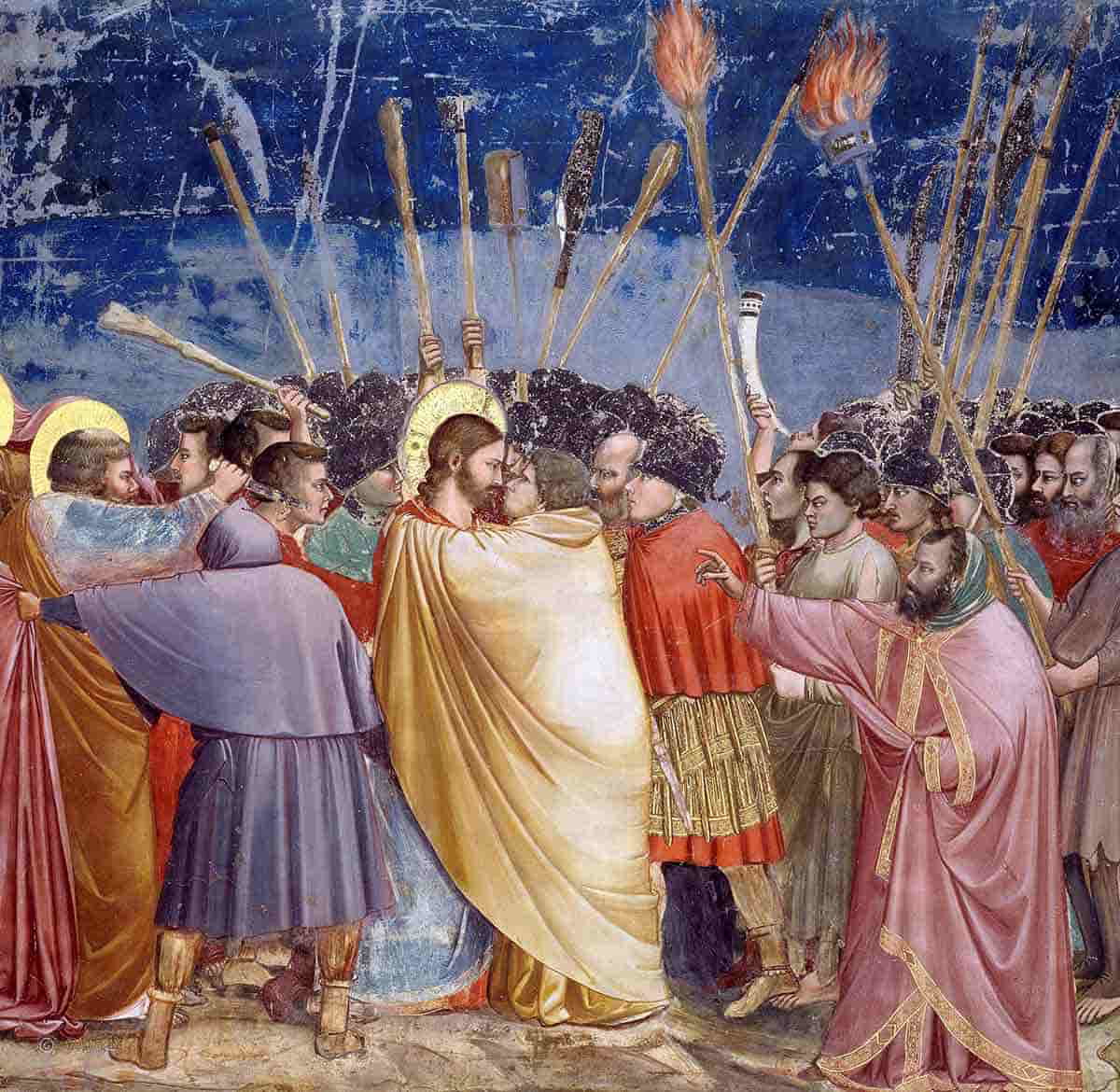
Giotto’s painting The Capture of Christ or The Kiss of Judas marked a significant departure from the earlier, more stylized, and static style of Byzantine art. This work showcases Giotto’s innovative approach to portraying Christian figures in a naturalistic manner, paving the way for many future artists.
In the painting, the figures are almost caught mid-movement, depicting the chaotic moment of Judas’s betrayal of Christ. While there is a lot happening in the background, the viewer’s attention is drawn to the central theme of Judas’s kiss. Judas leans in, enveloping Christ in his bright yellow cloak, making it appear as if he is the one about to be arrested.
There is a clear distinction in the emotional expressions of the central figures, which enhances Giotto’s naturalistic approach. Giotto captures genuine human emotions, conveying depth instead of using static or unrealistic expressions. Christ appears serene and serious as he gazes down at Judas, who exhibits desperation, eagerness, and a sinister look. Other figures around them, such as St. Peter on the left side of the composition, show struggle and determination as he attempts to cut off a soldier’s ear. The crowd surrounding Christ and Judas displays intense emotions, such as focus and anger, as they try to seize Christ.
To support the overall naturalistic theme of this piece, Giotto employs deep, earth-toned colors to ground the figures in a believable setting. Additionally, he makes use of an early version of chiaroscuro, utilizing subtle gradations of color.
Giotto is often praised as an artist who helped bridge the gap between the static, stylized Medieval Period and the naturalism of the Renaissance, and this particular painting serves as a testament to that transition.
2. El Greco’s Christ Carrying the Cross
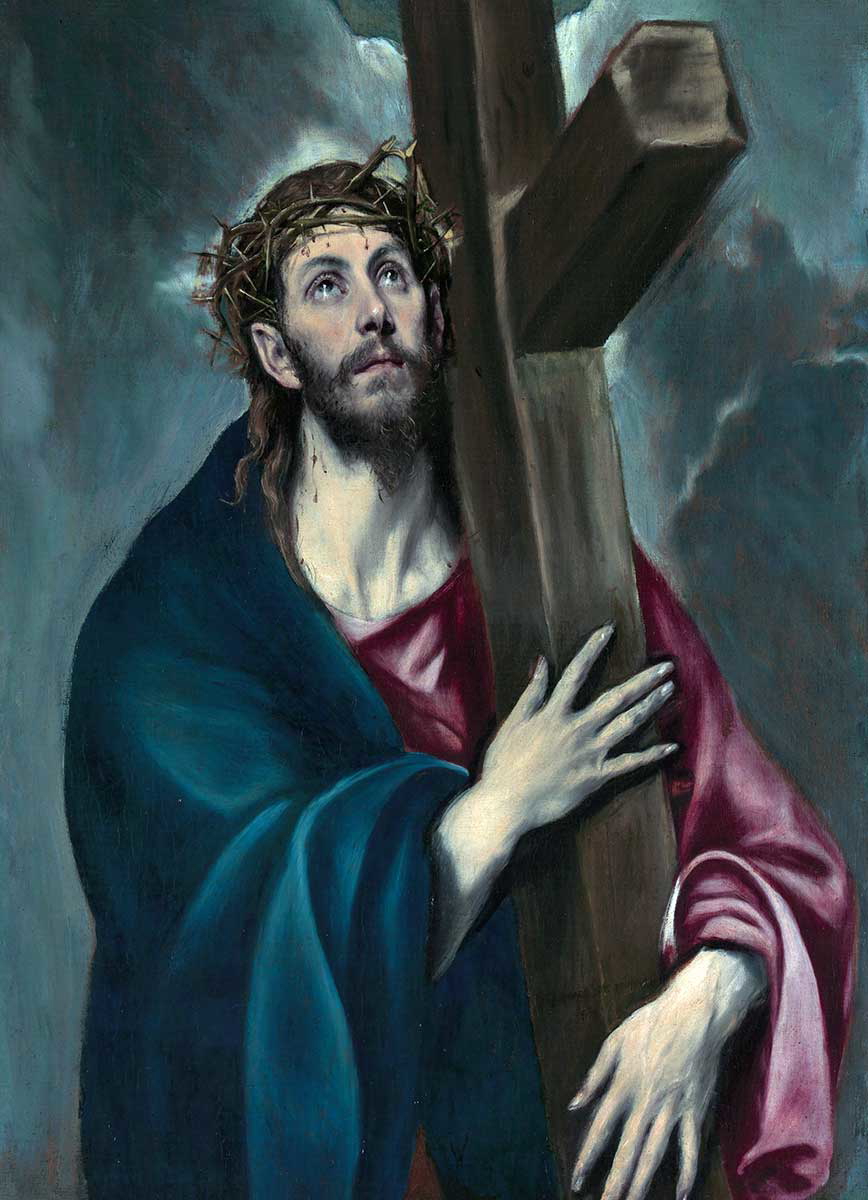
El Greco, born Domenikos Theotokopoulos, is renowned for the elongated, graceful figures in his compositions. His painting Christ Carrying the Cross exemplifies this style. In the artwork, Christ envelops the cross with his form, and his facial expression conveys a sense of serenity and acceptance of his fate rather than struggle or suffering. The cross appears smooth, without any fraying wood, giving it an almost weightless quality. Christ is centrally featured, which results in a minimal background dominated by dark blues, grays, and blacks, suggesting that a dangerous storm is brewing in the heavens.
El Greco’s use of cool, otherworldly colors transports the viewer to an ethereal mindset, inviting deep contemplation and meditation on this mystical and intimate portrayal of Christ’s Passion. Furthermore, El Greco cleverly employs chiaroscuro to highlight the depth of emotion in Christ’s face, bringing the looming storm closer to the viewer.
3. Diego Veláquez’s Christ Crucified
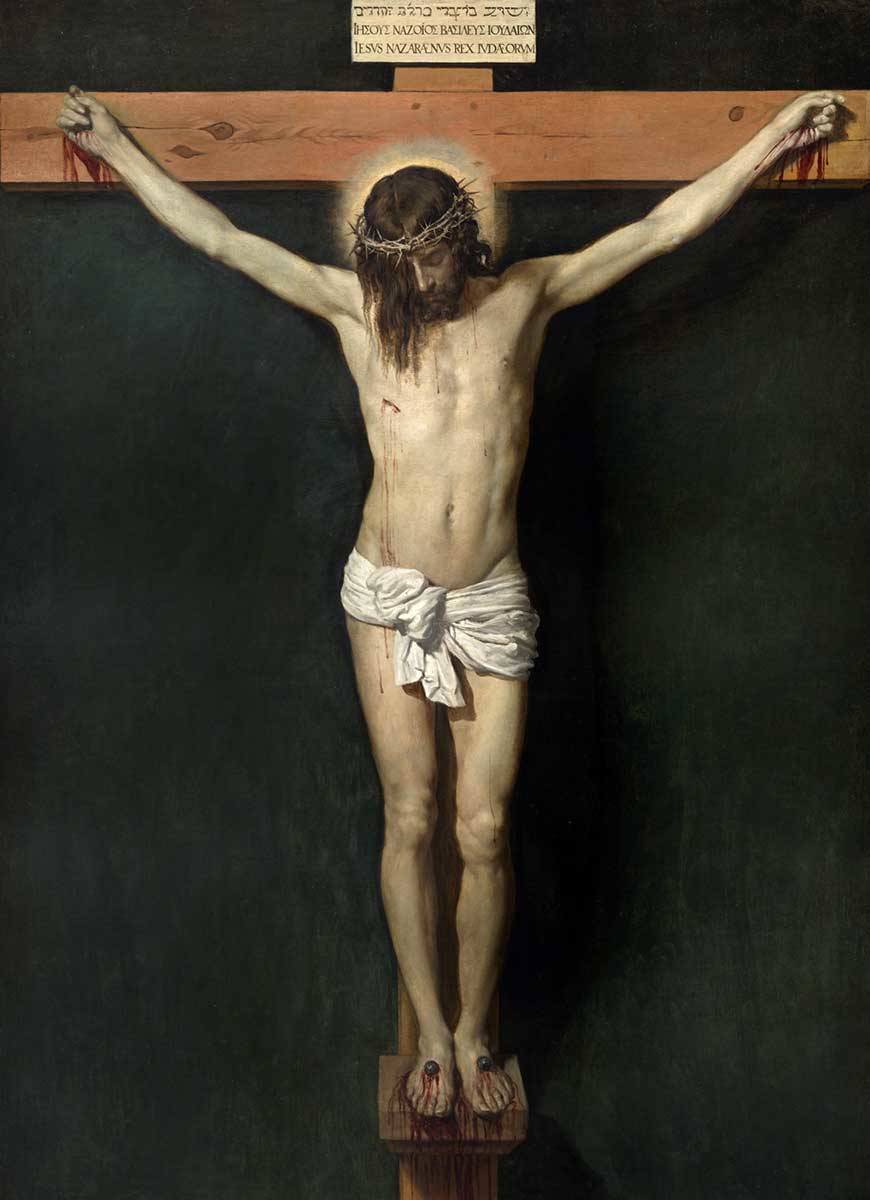
In this striking depiction of Christ’s Passion, Velázquez employs Baroque Realism, spiritual contemplation, and classical restraint to bring the artwork to life. The absence of dramatic movement and background directs the viewer’s focus to Christ’s lifeless body as he hangs on the cross.
The lack of background enhances the timeless and ethereal quality of Christ’s sacrifice. Although Christ’s body is rendered in a naturalistic style, Velázquez’s use of chiaroscuro creates a contrast between the lightness of Christ’s figure and the dark background, evoking a tranquil stillness that invites contemplation.
Christ tilts his head downwards, appearing as though he has already passed away. The blood from his nails and feet still looks fresh, and the deep red tone that Velázquez employs brings the scene to life.
4. Caravaggio’s The Taking of Christ
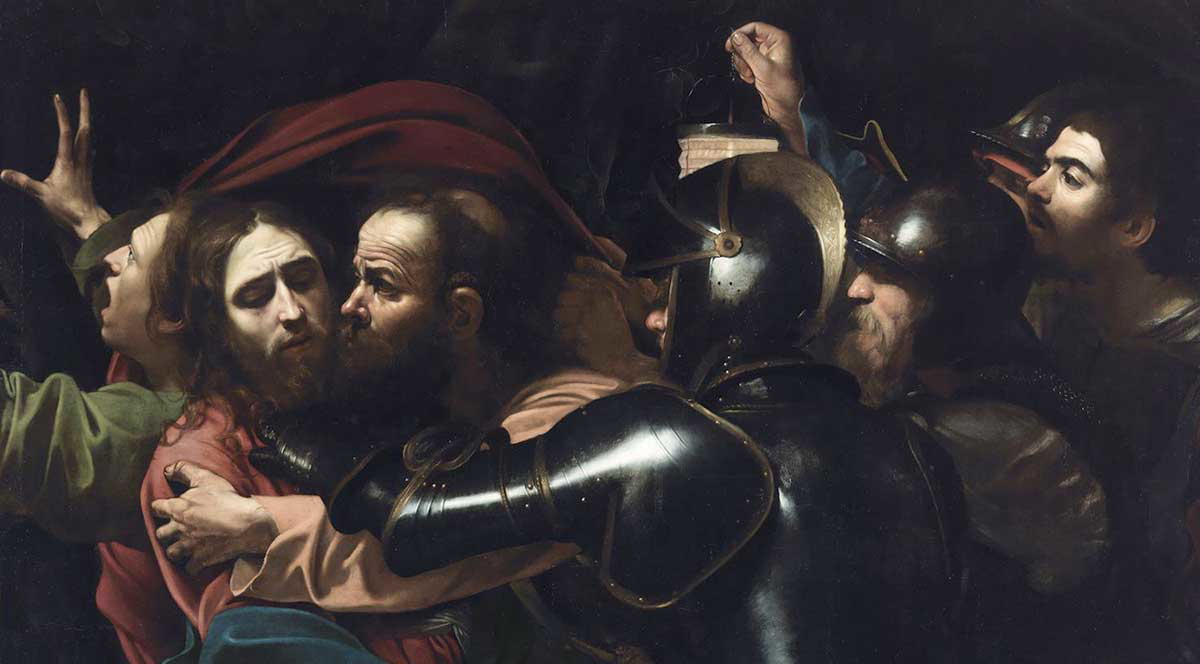
Michelangelo Merisi da Caravaggio’s portrayal of the arrest of Christ captures a moment rife with urgency and tension through a dynamic interplay of movement and chaos. The tumultuous scene is rendered with Caravaggio’s masterful use of chiaroscuro, a technique that contrasts deep shadows with bright highlights. This approach draws our attention to the central figures of Christ and Judas, allowing viewers to perceive their profound emotional expressions. The stark differences between light and dark not only enhance the dramatic intensity but also immerse us in the raw urgency of the moment.
In the foreground, Christ stands in poignant solitude, his hands folded in a gesture that echoes the imagery of martyrs and philosophers, symbolizing a spiritual transcendence that elevates him above physical suffering. This pose invites viewers to contemplate the depth of his sacrifice. Judas, in stark contrast, is depicted lunging toward Christ, his face a mask of betrayal as he signals to the nearby guards. The kiss he offers is laden with hypocrisy, marking the culmination of his treachery.
The surrounding chaos—the scrambling figures of soldiers and startled onlookers—serves to heighten the emotional stakes of the scene, enveloping the viewer in an atmosphere of desperation and confusion. Caravaggio’s brilliant composition not only presents a pivotal moment in Christian history but also evokes a visceral response, making us feel as though we are witnesses to this heart-wrenching event unfolding right before our eyes.
5. Michelangelo’s Pieta
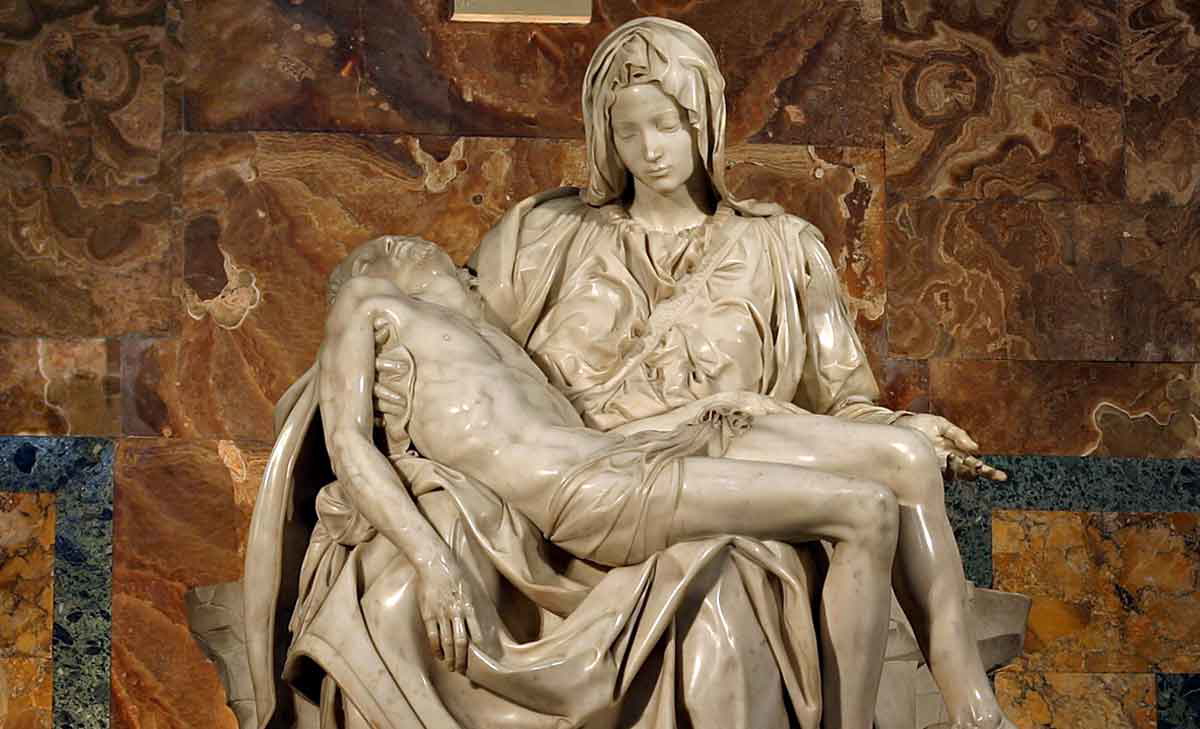
Michelangelo’s Pieta is a magnificent marble masterpiece located in St. Peter’s Basilica. The sculpture depicts the moment after Christ died on the cross, with his body resting in the arms of the Virgin Mary. Michelangelo intentionally made Mary’s body proportionately larger than Christ’s to symbolize the strength of a mother’s love. This effect is enhanced by the way her robes cascade down her body.
Mary lovingly cradles her deceased child, her expression serene and peaceful, reflecting her acceptance of the inevitable outcome. In this artwork, Mary is portrayed as a young woman, contrasting with other representations that depict her as older.
Christ’s body, while anatomically accurate, is still idealized, consistent with the style of the High Renaissance, which emphasized restraint and idealization.
6. Raphael’s The Deposition
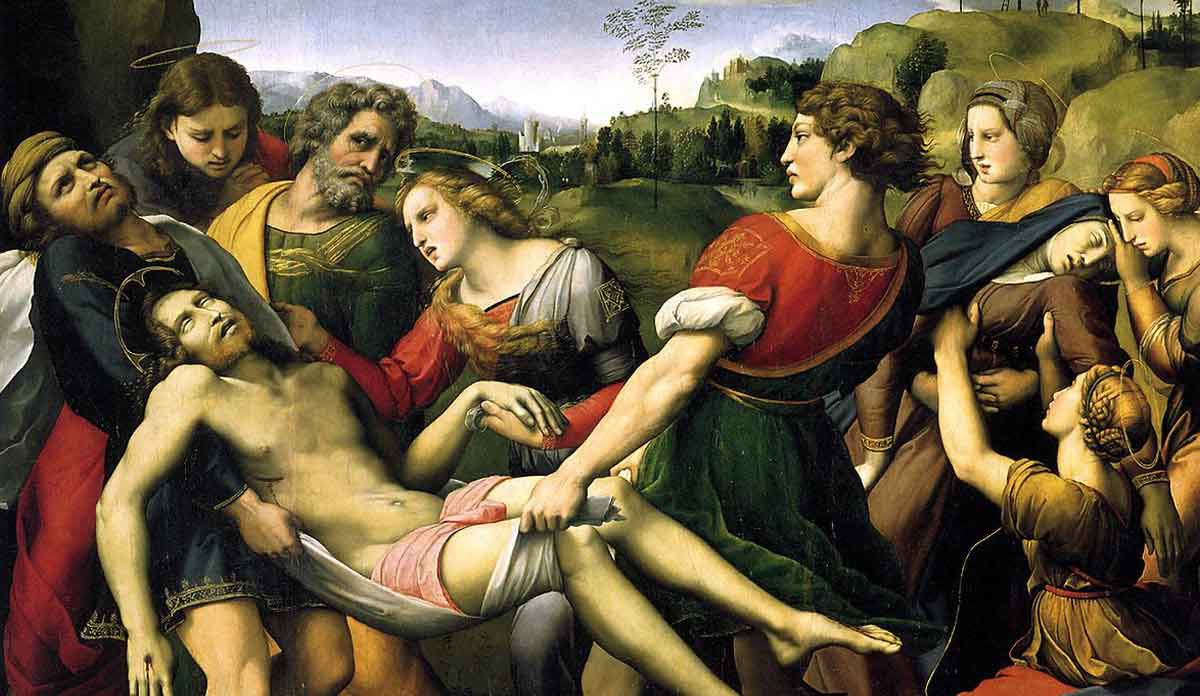
Raphael’s painting, The Deposition, powerfully emphasizes the bonds of human connection and the shared grief experienced by those gathered around Christ. The central figure of Christ, depicted in a moment of profound suffering, is surrounded by key figures: St. John, St. Nicodemus, Mary Magdalene, and the Virgin Mary.
Raphael skillfully captures not only the anguish of Christ but also the deep emotional turmoil felt by his followers, making the scene both profoundly human and relatable. The Virgin Mary is portrayed in a state of visible distress, leaning in toward her son and gently placing her hand near his head, embodying a mother’s sorrow. In a poignant display of loyalty and despair, Mary Magdalene cradles Christ’s hand, her face a mix of heartbreak and reverence. St. John and St. Nicodemus observe the scene, their expressions reflecting a shared sense of loss and helplessness.
The composition of the painting invites viewers to feel the weight of their sorrow, highlighting the intimate relationships among the figures and the collective grief they experience at this tragic moment. Through meticulous detail and emotional depth, Raphael brings to life the intersection of suffering and love that defines this deeply moving event.
